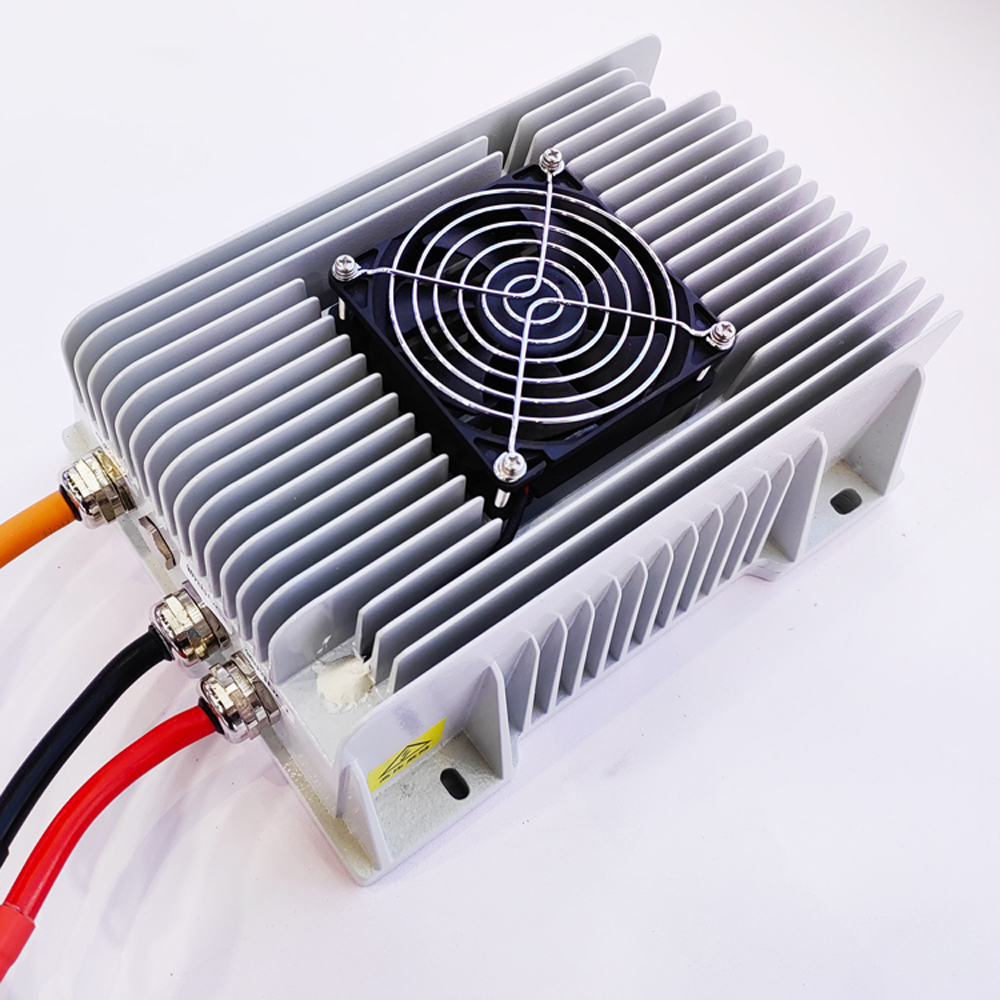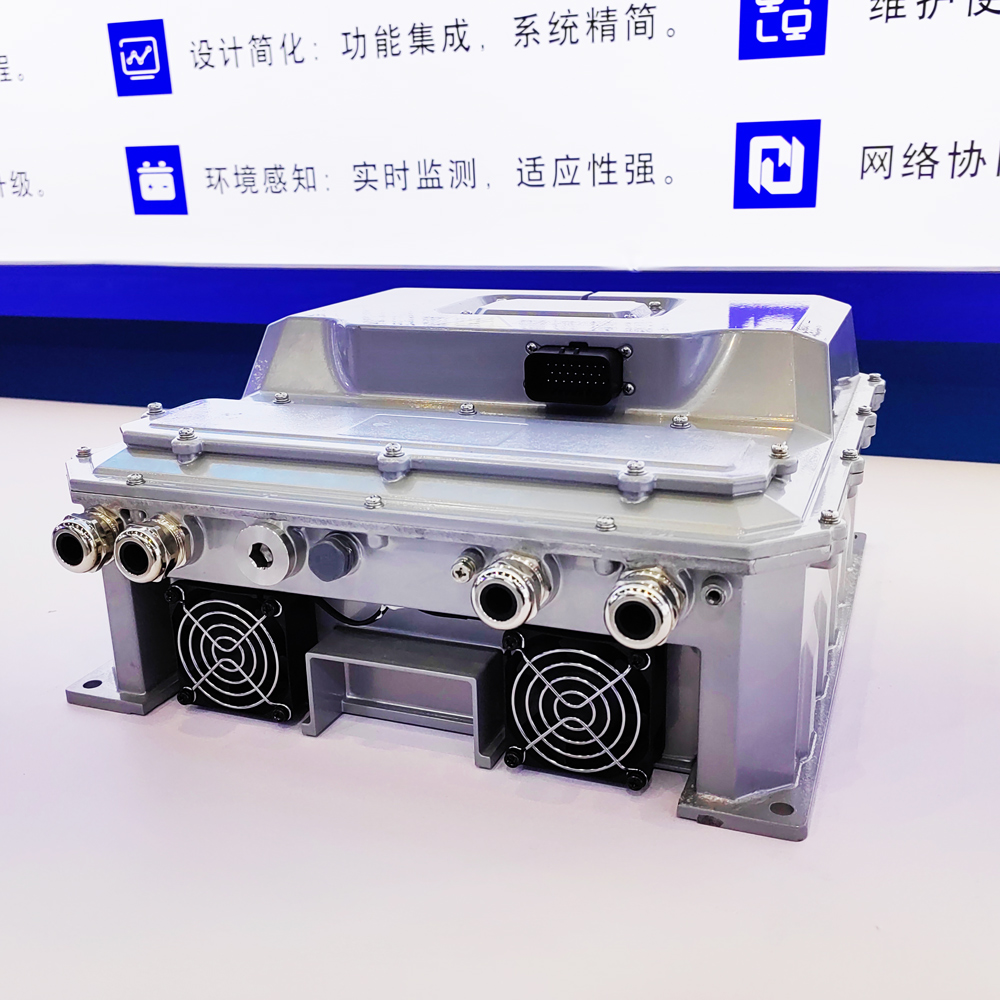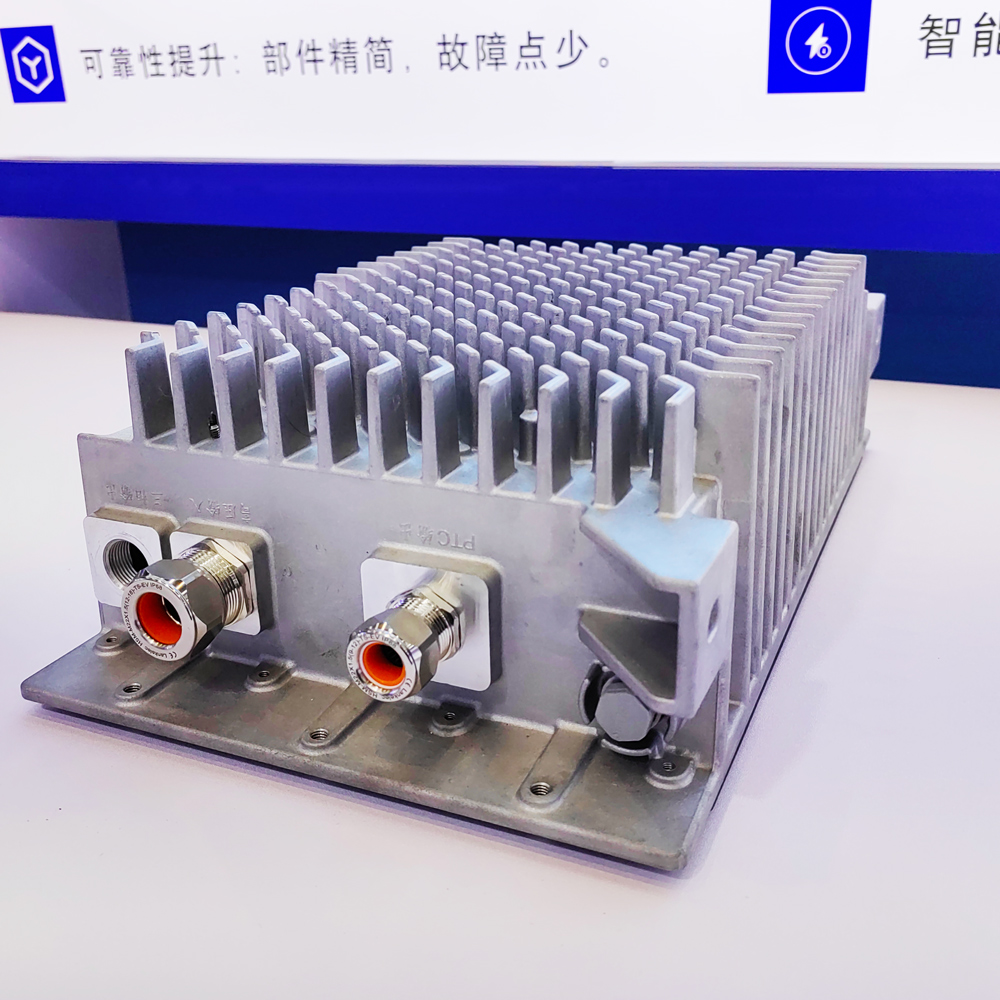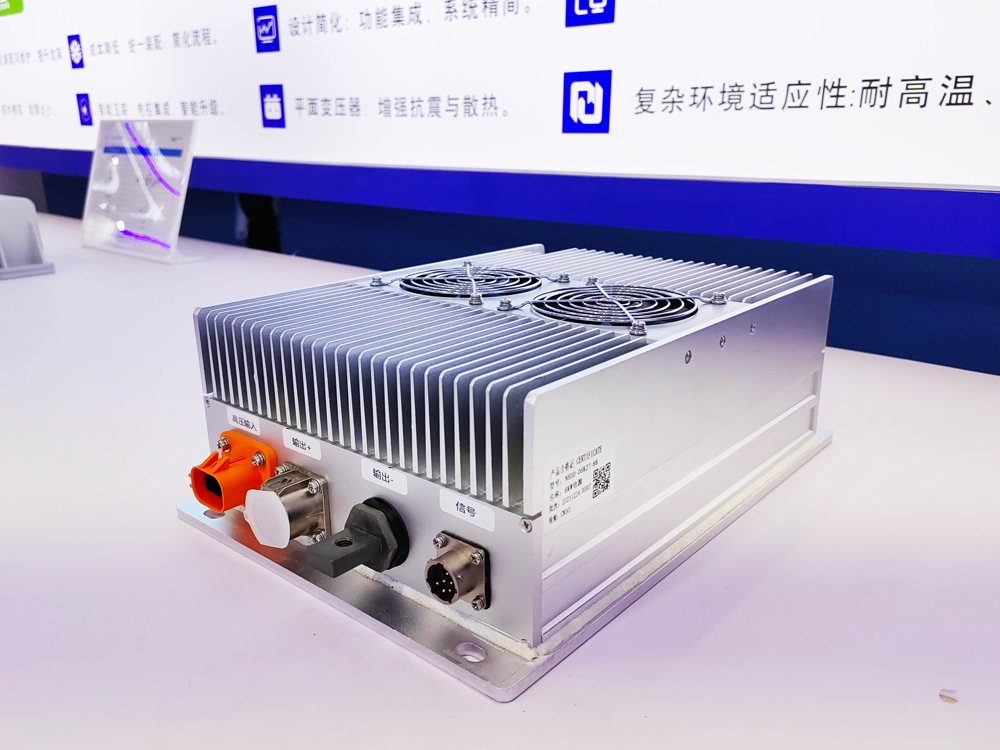Box digitale intelligente per la catena del freddo
Box digitale intelligente per la catena del freddo (magazzino per la catena del freddo): Rivoluzionare la logistica a temperatura controllata Panoramica del prodottoIl Digital Intelligent...




DC/DC Converter for Electric Vehicles: Product Overview
Introduction
In electric vehicles (EVs), the high-voltage battery pack stores direct current (DC) energy unsuitable for powering low-voltage systems (e.g., lighting, infotainment, instrumentation). The DC/DC converter bridges this gap by efficiently stepping down high-voltage DC (typically 300-800V) to 12V DC, ensuring reliable power supply for auxiliary systems while maintaining compatibility with traditional automotive electrical architectures.
Key Functions & Features
Technical Architecture
Vantaggi
Applicazioni
| DC – DC Power converter |
|---|
| Technical Data |
| Input voltage: 185V~850V (customized) |
| Power: 1.2KW/2KW/3KW |
| Static Battery Leakage Current: ≤10mA |
| Input control: hardware enable control, CAN communication |
| LV cable, withstand voltage 700~400Vdc |
| Rated output voltage: 27.5 ± 0.2Vdc, Max output current: 110A |
| Output voltage start time: within 6s (at rated load) (Input 540Vdc, output 27.5Vdc, rated load test time) |
| Output power: 3000W (MAX) |
| Static loss Current ≤10mA |
| Operation temperature: – 40°C – 65°C |
| Insulation resistance ≥20MΩ/100Vdc |
| Protection level: IP67 |
| Cable requirements – HV cable, withstand voltage 1500Vdc; |
Box digitale intelligente per la catena del freddo (magazzino per la catena del freddo): Rivoluzionare la logistica a temperatura controllata Panoramica del prodottoIl Digital Intelligent...
Climatizzatore per autobus elettrici NEWBASE: 8 tecnologie all'avanguardia che ridefiniscono il comfort e la sicurezza dei passeggeri...
NEWBASE: Unità di refrigerazione avanzate per soluzioni logistiche a catena del freddo da 4,2 m Come spina dorsale della moderna...
NEWBASE: Attuatori HVAC di precisione e soluzioni di controllo termico per le esigenze globali del settore automobilistico In NEWBASE,...
Sistema integrato di gestione dell'alimentazione per veicoli elettrici: Panoramica del prodotto Architettura del prodottoIl sistema integrato di gestione dell'alimentazione...
Il driver 2-in-1 (NB100-D-075-020) è utilizzato principalmente nei veicoli commerciali a nuova energia, che possono essere...